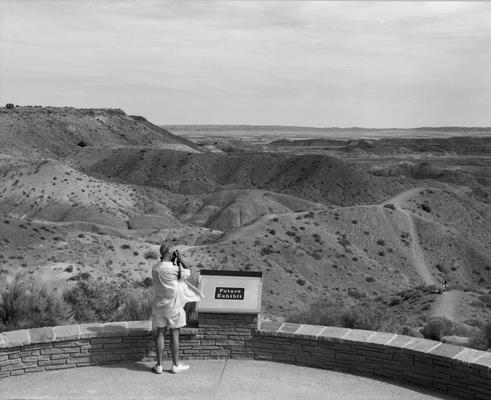A sometimes humorous but always perceptive look at how we experience national parks and monuments out West.
The National Park Service was established by an act of Congress in 1916 to "preserve unimpaired the natural and cultural resources and values of the National Park System for the enjoyment, education, and inspiration of this and future generations." This directive to protect wilderness yet provide accessibility to it without somehow compromising the integrity of the natural resources seems to be a self-fulfilling contradiction and an arena for conflicting priorities.
In Park Place, photographer David Heberlein explores the tension between access and enjoyment and preservation of America’s public lands. From 1992 to 2019, he traveled throughout the American West and visited thirty-five national parks, monuments, and recreation areas. His stunning photographs, made in the course of his many journeys, document the human presence within the national parks and monuments of the American West. They allude to human influence both through the marks we make on the land--whether temporary or permanent--and through the presence of visitors who appear in numerous shapes and sizes performing a variety of familiar sightseeing activities. These shifting scenarios provide compelling photographic documentation of the multiple roles that national parks and monuments play and the ongoing need to balance the human impact on nature with the preservation of wild places.
Park Place features sixty-four tritone photographs by David Heberlein along with an introductory essay by the photographer and an afterword. It promises to be a welcome addition to a longstanding tradition of artists, writers, and photographers heading out West to see and explore and interpret America’s national treasures.
| FindBook |
有 1 項符合
Park Place: Out West的圖書 |
 |
Park Place: Out West 作者:Heberlein 出版社:George F Thompson Publishing 出版日期:2023-06-30 語言:英文 規格:精裝 / 104頁 / 普通級/ 初版 |
| 圖書館借閱 |
| 國家圖書館 | 全國圖書書目資訊網 | 國立公共資訊圖書館 | 電子書服務平台 | MetaCat 跨館整合查詢 |
| 臺北市立圖書館 | 新北市立圖書館 | 基隆市公共圖書館 | 桃園市立圖書館 | 新竹縣公共圖書館 |
| 苗栗縣立圖書館 | 臺中市立圖書館 | 彰化縣公共圖書館 | 南投縣文化局 | 雲林縣公共圖書館 |
| 嘉義縣圖書館 | 臺南市立圖書館 | 高雄市立圖書館 | 屏東縣公共圖書館 | 宜蘭縣公共圖書館 |
| 花蓮縣文化局 | 臺東縣文化處 |
|
|
圖書介紹 - 資料來源:博客來 評分:
圖書名稱:Park Place: Out West
內容簡介
|











